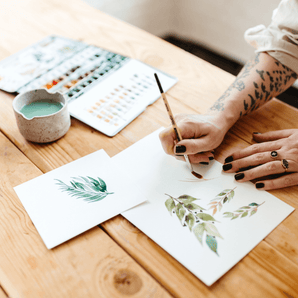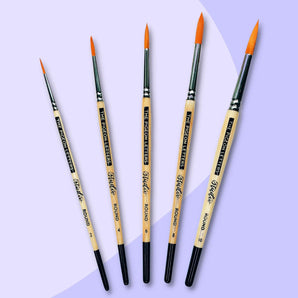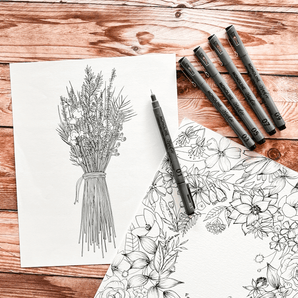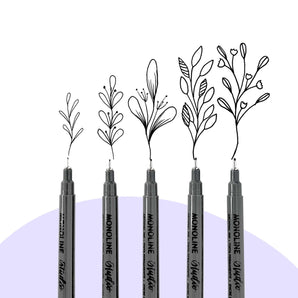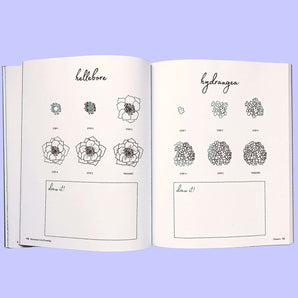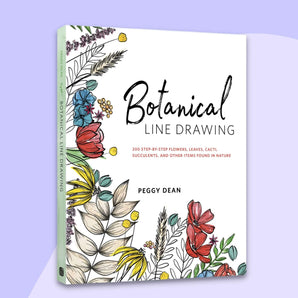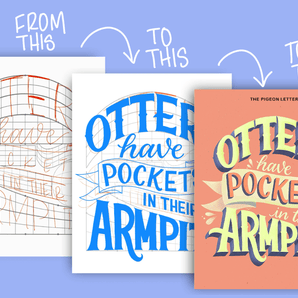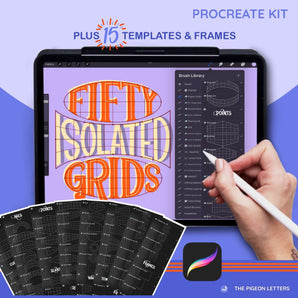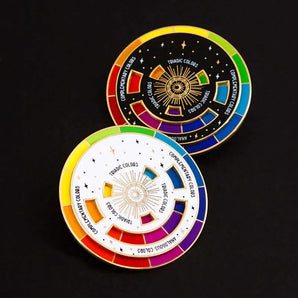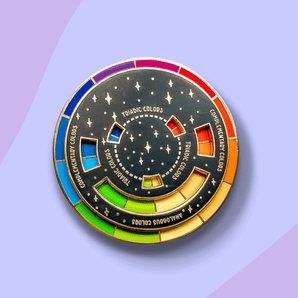Hello fellow creators! Watercoloring can be challenging some days, but most days, it's one of my favorite things to do when I want to relax. Today I'm showing one of my favorite items to watercolor, and that's wildflowers! Wildflowers are the BEST flower to paint with watercolor because they really are wild, meaning there's no such thing as a mistake!
Here's a quick, simple, and fun way to paint a delicate, loose wildflower using some of my favorite watercolors. I’ve broken down the whole process into 4 simple steps with a TON of images to reference. By the end of this tutorial, you'll be ready to loosen up those brush strokes and paint some colorful wildflowers!
Supplies

- Watercolor paper
- Watercolors (Sap green, Quinacridone Rose, Pyrrol Scarlet, Ultramarine)
- Size 8 Round Brush
- Paper Towels
- Jar of Clean Water
Step 1: Paint Petals
I always like to start with the flower petals, then move onto the stem and leaves. This gives me the freedom to place the flowers where I want without worrying about where the stems are! For this one, we'll be working from the top and sloooowly moving downwards.
I take some Quinacridone Rose and a little bit of Pyrrol Scarlet and mixed it in my palette with lots of water. Feel free to use any colors you'd like or whatever you have lying around! Wildflowers can be any color we want!
Make small brush marks on top of the page. These brush marks will be the petals. Make them just slightly bigger as you move downwards. Your wildflowers will become wider when you continue to the bottom!

Keep alternating them on the left and right side, as you move down, keep a tiny gap in the center for the stem.

Increase the size of your brush marks as you move down, while you increase the intensity of the color by adding less and less water on your brush.

Make sure to keep a lot of white space between the petals, and try not to overcrowd them!

You can always go back and fix the structure of your flower by adding flowers to balance out your shape. If you think the top of your flower could be a little thinner, go back and add smaller strokes on top! You can also add little strokes here and there all through the flower, including some in the center. Don't forget, there are no mistakes with wildflowers!

Step 2: Add Some Character

While the basic shape of your flower is already defined by your petals, you can still add some darker tones to give your flower a little more character. There's a lot of potentials to make your wildflower super unique in this step!
By mixing a little bit of Ultramarine with the Quinacridone Rose (or whatever you have lying around), create a darker hue, and gently add the color to the tips of the petals. If the petals are still wet, enjoy watching them bleed through the petals. It is not necessary to add these strokes on all the petals, but I make sure I add them to the bigger ones!
Step 3: Begin Painting Your Leaves and Stem

Mix some Sap Green with a tiny bit of the Quinacridone Rose for the stem and leaves. Similar to the petals, go ahead and start painting the stalk/stem from the top. Then, paint little dots on top and as you continue down, try to make them slightly bigger.

Always make sure that the stem isn't a single straight line, but small, thin lines with white spaces in between. Try to vary the thickness of the lines and not worry about connecting all the petals to the stem. That way it gives your wildflowers a more all-natural look!

Similar to the petals, as you continue down, darken the greens by adding less and less water. Also, add small leaves between the flowers. With one long gentle stroke, paint the stem. Then it's time to add some leaves!

Step 4: Add Detail to the Stem
Using the same mix of green, load your brush with the color and gently press your entire brush onto the paper to get some wide leaves, and swiftly lift them to get the pointy ends.

Make sure you don't simply stack the leaves one above the other, but to give it some movement in different directions and angles. You could even try to overlap some leaves over others to make it look more natural! And boom! All done! I hope you found this tutorial useful and most importantly, a great way to get your creativity going.

I hope this helps you to loosen up your strokes and makes watercolor a little less intimidating! Because it's one of the best ways to express yourself!

My name is Sushma Hedge and I'm a watercolor artist, Skillshare teacher, and overall lover of all kinds of art. You can find more of my watercolor paintings on my Instagram handle, @sushhegde AND if you're interested in learning how to paint even more wildflowers, stop by my Skillshare and sign up for one of my classes!






